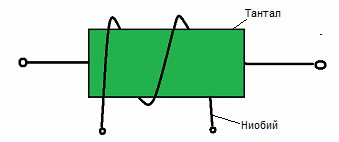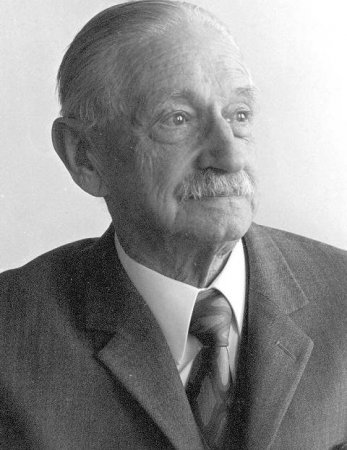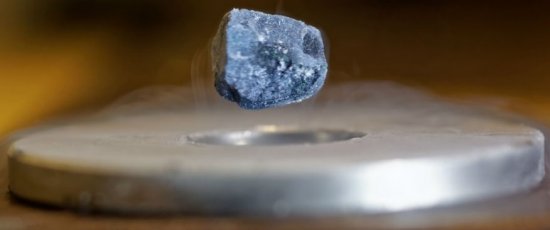Meissner effect and its use
The Meissner effect or Meissner-Oxenfeld effect consists in the displacement of a magnetic field from the bulk of the superconductor during its transition to the superconducting state. This phenomenon was discovered in 1933 by the German physicists Walter Meissner and Robert Oxenfeld, who measured the distribution of the magnetic field outside superconducting samples of tin and lead.
Walter Meissner
In the experiment, the superconductors, in the presence of an applied magnetic field, were cooled below their superconducting transition temperature until almost all of the samples' internal magnetic field was reset. The effect was detected by scientists only indirectly, because the magnetic flux of the superconductor is preserved: when the magnetic field inside the sample decreases, the external magnetic field increases.
Thus, the experiment clearly showed for the first time that superconductors are not only ideal conductors, but also demonstrate a unique defining property of the superconducting state.The ability to shift the magnetic field is determined by the nature of the equilibrium formed by neutralization inside the unit cell of the superconductor.
A superconductor with little or no magnetic field is said to be in the Meissner state. But the Meissner state breaks down when the applied magnetic field is too strong.
It is worth noting here that superconductors can be divided into two classes depending on how this violation occurs. In superconductors of the first type, superconductivity is abruptly violated when the strength of the applied magnetic field becomes higher than the critical value Hc .
Depending on the geometry of the sample, an intermediate state can be obtained, similar to the exquisite pattern of regions of normal material carrying a magnetic field mixed with regions of superconducting material where there is no magnetic field.
In type II superconductors, increasing the applied magnetic field strength to the first critical value Hc1 leads to a mixed state (also known as a vortex state), in which more and more magnetic flux penetrates the material, but there is no resistance to electric current unless this current is not too high.
At the value of the second critical strength Hc2 the superconducting state is destroyed. The mixed state is caused by vortices in a superfluid electron fluid, which are sometimes called fluxons (fluxon-quantum of magnetic flux) because the flux carried by these vortices is quantized.
The purest elemental superconductors, with the exception of niobium and carbon nanotubes, are of the first type, while almost all impurities and complex superconductors are of the second type.
Phenomenologically, the Meissner effect was explained by the brothers Fritz and Heinz London, who showed that the electromagnetic free energy of a superconductor is minimized under the condition:

This condition is called London's equation. He predicted that the magnetic field in a superconductor decays exponentially from whatever value it has at the surface.
If a weak magnetic field is applied, then the superconductor displaces almost all of the magnetic flux. This is due to the appearance of electric currents near its surface. The magnetic field of the surface currents neutralizes the applied magnetic field inside the volume of the superconductor. Since the displacement or suppression of the field does not change over time, this means that the currents creating this effect (direct currents) do not decay over time.
Near the surface of the sample, within the London depth, the magnetic field is not completely absent. Each superconducting material has its own magnetic penetration depth.
Any perfect conductor will prevent any change in magnetic flux passing through its surface due to normal electromagnetic induction at zero resistance. But the Meissner effect is different from this phenomenon.
When a conventional conductor is cooled to a superconducting state in the presence of a permanently applied magnetic field, magnetic flux is thrown out during this transition. This effect cannot be explained by infinite conductivity.
The placement and subsequent levitation of a magnet on an already superconducting material does not exhibit the Meissner effect, whereas the Meissner effect is exhibited if the initially stationary magnet is later repelled by the superconductor cooled to a critical temperature.
In the Meissner state, superconductors exhibit perfect diamagnetism or superdiamagnetism. This means that the total magnetic field is very close to zero deep inside them, a great distance inward from the surface. Magnetic susceptibility -1.
Diamagnetism is defined by the generation of a material's spontaneous magnetization that is exactly opposite to the direction of an externally applied magnetic field. But the fundamental origin of diamagnetism in superconductors and normal materials is very different.
In ordinary materials, diamagnetism occurs as a direct result of electromagnetically induced orbital rotation of electrons around atomic nuclei when an external magnetic field is applied. In superconductors, the illusion of perfect diamagnetism arises because of constant shielding currents that flow against the applied field (the Meissner effect itself), not just because of orbital spin.
The discovery of the Meissner effect led in 1935 to the phenomenological theory of superconductivity by Fritz and Heinz London. This theory explains the disappearance of resistance and the Meissner effect. This allowed us to make the first theoretical predictions about superconductivity.
However, this theory only explains the experimental observations, but does not allow the identification of the macroscopic origin of the superconducting properties.This was successfully done later, in 1957, by the Bardeen-Cooper-Schriefer theory, from which both the depth of penetration and the Meissner effect follow. However, some physicists argue that the Bardeen-Cooper-Schrieffer theory does not explain the Meissner effect.

The Meissner effect is applied according to the following principle. When the temperature of a superconducting material passes through a critical value, the magnetic field around it changes abruptly, resulting in the generation of an EMF pulse in the coil wound around such material. And when the current of the control coil changes, the magnetic state of the material can be controlled. This phenomenon is used to measure ultra-weak magnetic fields using special sensors.
A cryotron is a switching device based on the Meissner effect. Structurally, it consists of two superconductors. A niobium coil is wound around a tantalum rod through which a control current flows.
As the control current increases, the strength of the magnetic field increases and the tantalum passes from the superconducting state to the ordinary state. In this case, the conductivity of the tantalum wire and the operating current in the control circuit change in a non-linear manner. On the basis of cryotrons, for example, controlled valves are created.



